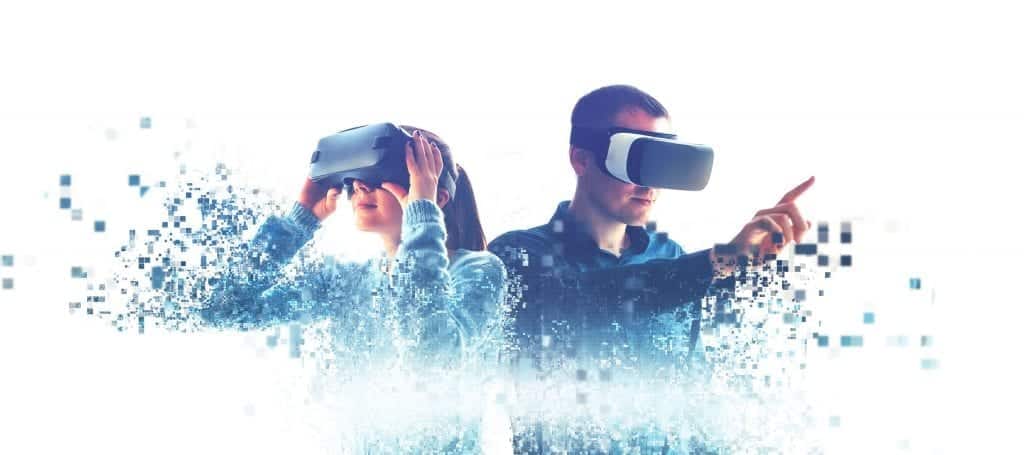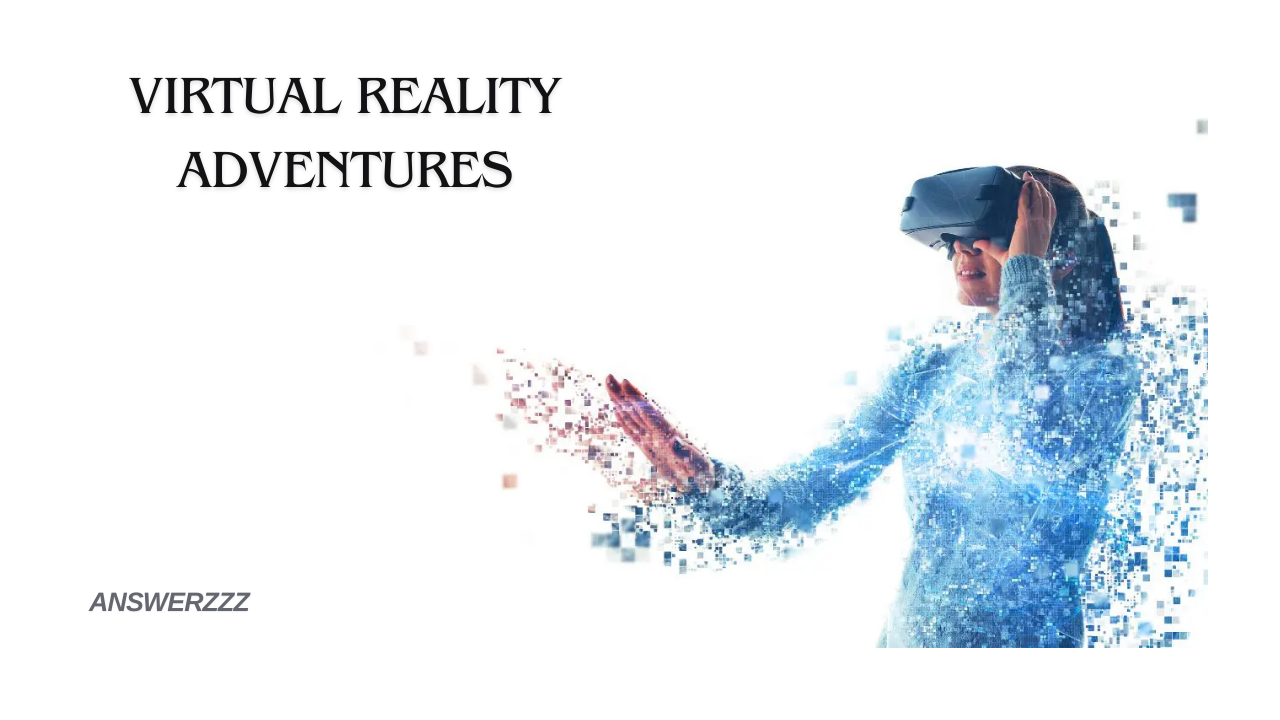Virtual reality (VR) has transformed the way we experience the world, allowing us to embark on thrilling adventures without leaving the comfort of our homes. From the stunning landscapes of fantasy realms to the immersive simulations of real-world locations, VR provides an unparalleled escape from reality. This article delves into the incredible opportunities that VR offers, exploring its applications in gaming, education, travel, and beyond. Join us as we uncover the virtual frontiers that await you!
1. Introduction to Virtual Reality

Virtual reality refers to a computer-generated environment that simulates physical presence in real or imagined worlds. It typically involves the use of VR headsets that allow users to immerse themselves in 3D environments, interact with virtual objects, and experience sensations that mimic reality. VR technology has advanced significantly over the past decade, making it more accessible and affordable for consumers.
1.1. The Rise of VR Technology
The journey of VR technology began in the 1960s with early prototypes. However, it gained mainstream attention in the 1990s with the introduction of devices like the Virtuality Group’s arcade systems. The modern resurgence of VR began in the early 2010s, driven by advancements in computing power, graphics, and motion tracking. Key players like Oculus, HTC, and Sony have since released consumer-grade VR headsets, sparking widespread interest and innovation in the field.
1.2. Understanding the Technology
At its core, VR technology consists of several key components:
- Head-Mounted Displays (HMDs): These devices, worn on the head, provide immersive visual experiences by displaying stereoscopic images that create depth perception.
- Motion Tracking: Sensors track the user’s head and body movements, allowing for real-time adjustments to the virtual environment. This creates a sense of presence, making users feel as if they are genuinely in the virtual world.
- Controllers: Handheld devices enable users to interact with the virtual environment. They often feature motion tracking, buttons, and haptic feedback to enhance the immersive experience.
- Audio: Spatial audio technology enhances the realism of VR experiences, allowing users to hear sounds coming from specific directions within the virtual space.
2. Gaming: The Heart of VR Adventures
Smart Toys: Merging Playtime with Technology for Interactive Learning
Gaming is one of the most popular and well-established applications of virtual reality. VR games transport players to fantastical realms, challenging them with immersive gameplay and captivating narratives. From epic fantasy quests to heart-pounding horror experiences, the VR gaming landscape is diverse and ever-evolving.
2.1. Popular VR Games and Experiences
Some standout titles in the VR gaming world include:
- Half-Life: Alyx: A flagship title for VR gaming, this first-person shooter immerses players in a dystopian world where they must combat alien forces. Its intricate level design and engaging storytelling make it a must-play for VR enthusiasts.
- Beat Saber: This rhythm-based game combines music with physical movement as players slice through blocks representing musical beats. Its engaging gameplay and energetic soundtrack make it a favourite among both casual and hardcore gamers.
- The Walking Dead: Saints & Sinners: Set in the iconic universe of “The Walking Dead,” this game challenges players to survive in a zombie-infested world. The blend of combat, exploration, and decision-making creates a gripping narrative experience.
2.2. Social Gaming in VR
Many VR games feature social elements, allowing players to connect with friends and strangers from around the globe. Multiplayer VR experiences foster collaboration and competition, creating vibrant virtual communities. Games like Rec Room and VRChat offer social spaces where users can meet, interact, and participate in various activities, blurring the lines between gaming and socializing.
3. Education and Training: Learning in Immersive Environments
Beyond gaming, virtual reality is making significant strides in education and training. By immersing students in interactive learning experiences, VR enhances engagement and retention of knowledge.

3.1. Virtual Field Trips
Imagine exploring ancient civilizations, outer space, or the depths of the ocean without leaving your classroom. VR allows educators to take students on virtual field trips, providing firsthand experiences of locations and events that would otherwise be impossible to access.
For example, platforms like Google Expeditions offer educators the tools to guide students through virtual tours of historical landmarks, natural wonders, and cultural sites. These immersive experiences can spark curiosity and foster a deeper understanding of the subject matter.
3.2. Professional Training Simulations
Many industries are leveraging VR for training purposes. Healthcare professionals can practice complex surgical procedures in a risk-free environment, while pilots can undergo flight simulations to prepare for real-world scenarios. VR training reduces costs, improves safety, and enhances skill acquisition across various fields.
3.3. The Future of Education with VR
As VR technology continues to evolve, its potential in education is vast. The integration of artificial intelligence and machine learning could create personalized learning experiences tailored to individual students’ needs. Additionally, advancements in haptic feedback technology may enable learners to interact with virtual objects, further enhancing the educational experience.
4. Travel: Exploring the World from Home
While nothing compares to the experience of travelling in person, virtual reality offers a compelling alternative for those unable to explore the world physically. VR travel experiences provide a taste of adventure and cultural immersion from the comfort of home.
The Rise of AI-Powered Learning Tools: Enhancing Education for Kids
4.1. Virtual Travel Experiences
Platforms like Wander and VIRTUAL REALITY TRAVEL offer users the chance to explore famous landmarks and breathtaking landscapes virtually. Whether it’s strolling through the streets of Paris, hiking the trails of Machu Picchu, or sailing through the canals of Venice, VR travel experiences can transport users to iconic destinations worldwide.
4.2. Cultural Immersion
VR travel experiences often include interactive elements, allowing users to engage with the local culture. Users can attend virtual festivals, try traditional cuisine, and interact with locals through guided experiences. This cultural immersion fosters a greater appreciation for different ways of life and encourages empathy.
4.3. Overcoming Travel Barriers
VR travel can be especially beneficial for individuals with mobility challenges or those living in remote areas with limited access to travel. By breaking down physical barriers, VR ensures that everyone can experience the beauty and diversity of our planet.
5. Fitness: Getting Active with VR
Virtual reality isn’t just about exploring new worlds; it can also be a powerful tool for fitness and wellness. VR fitness experiences combine exercise with gaming elements, making workouts enjoyable and engaging.

5.1. Popular VR Fitness Apps
Several VR fitness applications have gained popularity, including:
- Beat Saber: As mentioned earlier, this rhythm game doubles as an effective workout. Players engage in physical movement while dancing to music and slashing blocks.
- Supernatural: This immersive fitness app combines cardio workouts with beautiful virtual landscapes. Users can engage in guided workouts led by professional trainers while travelling through stunning environments.
- FitXR: FitXR offers a variety of workout classes, including boxing, dance, and high-intensity interval training (HIIT). The social aspect allows users to join classes with friends or compete against others.
5.2. The Benefits of VR Fitness
VR fitness has several advantages, including:
- Motivation: The gamified nature of VR workouts can motivate users to exercise regularly. Achievements, rewards, and competition keep users engaged and accountable.
- Variety: VR fitness offers diverse workouts that can prevent boredom and monotony. Users can explore different activities and environments to keep their routines fresh.
- Accessibility: VR fitness allows individuals to exercise in the comfort of their homes, eliminating barriers to accessing gyms or fitness studios.
6. The Future of VR Adventures
As technology continues to advance, the future of virtual reality adventures looks promising. Innovations in hardware, software, and user experience will shape the next generation of VR experiences.
6.1. Enhanced Realism and Immersion
Future VR headsets are expected to offer improved visuals, higher refresh rates, and advanced motion tracking, creating a more realistic and immersive experience. Eye-tracking technology may enable dynamic focus adjustments, allowing users to interact with their surroundings intuitively.
6.2. Cross-Platform Experiences
The growth of cross-platform compatibility will enable users to engage with VR content on various devices, including smartphones and tablets. This accessibility will expand the user base and encourage more developers to create VR content.
6.3. Integration with Augmented Reality (AR)
The convergence of VR and augmented reality (AR) may lead to mixed-reality experiences that blend the virtual and physical worlds. Users could interact with virtual objects in their real environment, opening up new possibilities for gaming, education, and social interaction.

Virtual reality adventures offer a gateway to exploring new worlds and experiences that were once unimaginable. From gaming and education to travel and fitness, VR technology has the potential to transform how we interact with the world around us. As technology continues to evolve, the possibilities for virtual reality adventures are limitless. So, don your headset, and get ready to embark on an incredible journey from the comfort of your own home!



